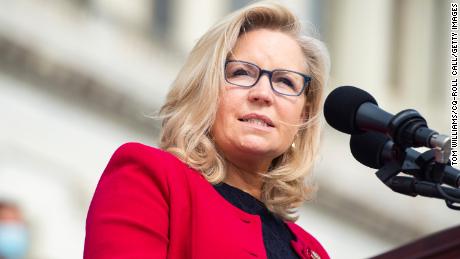Congressional investigators pored through “thousands of documents,” received written statements from 50 police officers who defended the Capitol and received testimony from a wide array of current and former officials who played a role in the security preparations and response.
Here are six takeaways from the report and its recommendations, which were released on a bipartisan basis by the Senate Rules Committee and the Senate Homeland Security Committee.
Capitol Police were warned
The report concluded that the US Capitol Police’s main intelligence unit “was aware of the potential for violence in the days and weeks ahead of January 6.” Period. Full stop. They were warned.
But not everyone was aware. The inquiry determined that USCP’s “decentralized” intelligence operation meant some people saw these warnings while other officials were left in the dark.
The Metropolitan Police Department in Washington, DC, told Capitol Police that hotel bookings roughly doubled in comparison to pro-Trump rallies in November and December, the Senate report said.
It was becoming clear to security officials and ordinary citizens alike that January 6 would be different. A private citizen emailed USCP’s general mailbox on December 28 saying there were “tweets from people organizing to ‘storm the Capitol’ on January 6th,” according to the report.
Still, USCP maintained its assessment that January 6 would likely resemble the minor pro-Trump rallies in November and December.
Red tape got in the way
The report said, “The USCP Chief has no unilateral authority to request assistance from the National Guard.” This is a simple statement, but it explains a lot about the failures that day.
Then-Capitol Police Chief Steven Sund wanted to call in the troops for backup but needed to coordinate with other Hill security officials. When the officials tried to deal with the request, they were unfamiliar with the laws and regulations that needed to be followed, the inquiry found.
The red tape “hindered” the much-needed National Guard response, according to the report. And that’s why one of the first recommendations from the Senate report is to empower the Capitol Police chief to have unilateral authority to request military support in emergency situations.
It seems like a no-brainer, but for this to happen, Congress will need to pass a new law.
Embarrassing crunch-time failures
The Senate inquiry uncovered some embarrassing failures within the “civil disturbance unit” of the Capitol Police, which is essentially the force’s riot police or emergency response squad.
The Capitol Police activated seven of these special units in advance of January 6, but “only four of those platoons were outfitted special protective equipment” like helmets and shields, the report said. And when one of the platoons tried to get its equipment, it was on a locked bus.
The senators recommended that the special unit receive better training and more funding.
Underestimating online chatter
Plenty of Trump supporters posted plenty of violent threats and dangerous assertions on the internet in the run-up to January 6. The report said these were found on “message boards, social media, memes, or hashtags.” But intelligence officials struggled with how aggressively to police political speech, and how to differentiate the real threats from typical internet nonsense.
“FBI and (Department of Homeland Security) officials stressed the difficulty in discerning constitutionally protected free speech versus actionable, credible threats of violence,” the report said, noting that officials have said they need to make improvements and do better in the future.
Horrifying tales from the frontlines
We’ve already heard from many of the brave police officers who risked their lives defending the Capitol, including some who were injured and others who engaged in hand-to-hand combat.
But the report fleshed this out, providing new accounts from the frontlines of the battle.
“We did what we could against impossible odds and a volatile crowd which many times threatened us with phrases like ‘We’re gonna kill you!'” one officer told the committees. “…I felt at this time a tangible fear that maybe I or some of my colleagues might not make it home alive.”
Another officer described how they were called a “Nazi.” Black officers have spoken out about the racial abuse at the hands of the mob, including being called the N-word. In a previously unreported incident, one officer said they saw “someone give a Nazi salute to the Capitol.”
This isn’t the full story
This 95-page report is the first comprehensive offering from the long list of Senate and House committees that are investigating various matters related to the Capitol insurrection. It’s by far one of the most thorough fact-finding efforts and was released Tuesday in a bipartisan fashion.
But as comprehensive as it is, it only examined one piece of the bigger puzzle. It looked at the “security, planning and response failures” by law enforcement. But what about efforts by extremist groups to plan for violence in DC? What about former President Donald Trump and the Republican officials who fanned the flames? Congress isn’t equipped to probe these issues.
Senate aides said investigators intentionally avoided the most politicized topics — like Trump’s culpability — because they wanted to keep the probe bipartisan. The aide even said that to keep Republicans in the fold, they avoided using the word “insurrection” to describe the attack.
Apparently, the Senate investigation was significantly watered down before it even started.
This is one the many reasons why so many Democrats, Republicans, former US officials, national security experts, and US Capitol Police officers agree that there should be an independent commission to investigate January 6. Not just to look at narrow questions but to examine the big picture — extremism, disinformation, radicalization, incitement, and much more.
Senate Republicans blocked a bill to establish a commission, which now appears to be dead.







